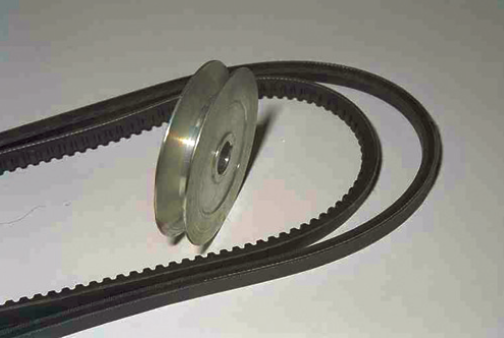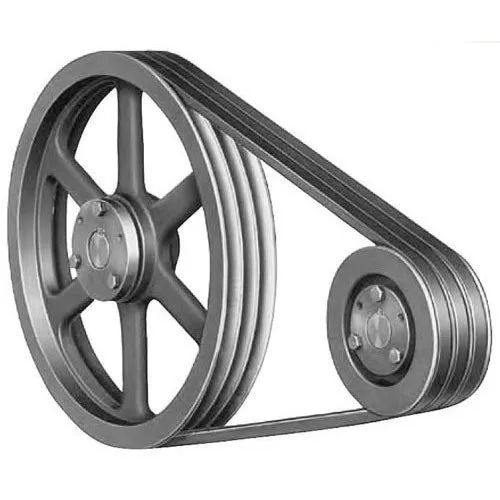V belts and pulleys are mechanical components commonly used in power transmission systems. They work together to transfer power from one shaft to another, often with high efficiency and low maintenance. In this blog, we will discuss V belts and pulleys, their types, advantages, and applications.
What are V Belts?
V belts, also known as Vee belts or wedge belts, are flexible belts with a trapezoidal cross-section. They are commonly made of rubber or other elastomers and are designed to fit in V-shaped grooves on pulleys. V belts are used to transmit power between two rotating shafts and can handle both high and low speeds.
What are Pulleys?
Pulleys are circular or cylindrical mechanical components that have a groove around their circumference. They are commonly made of metal or other durable materials and are used to change the direction of a force or transmit power. Pulleys are classified into two main types:
- Drive Pulleys: These are the pulleys that connect to the motor or engine shaft and transfer power to the driven equipment.
- Driven Pulleys: These are the pulleys that receive power from the drive pulley and transmit it to the equipment.
Types of V Belts
V belts come in different sizes and types depending on the application. Some of the common types include:
- Classical V Belts: These are the standard V belts used in most power transmission systems. They have a trapezoidal cross-section and are suitable for both light and heavy-duty applications.
- Narrow V Belts: These belts have a narrower cross-section than classical V belts and are suitable for applications that require high-speed and high torque.
- Wedge V Belts: These are V belts with a wider base and a narrower top. They are designed to handle high torque and reduce the chance of slipping.
- Variable Speed V Belts: These belts have a wider cross-section and are used in applications where the speed needs to be adjusted.
Advantages of V Belts and Pulleys
V belts and pulleys offer several advantages over other power transmission components, including:
- High Efficiency: V belts and pulleys have a high power transmission efficiency, typically ranging from 90% to 98%.
- Low Maintenance: V belts and pulleys require little maintenance compared to other power transmission components, such as gearboxes.
- Quiet Operation: V belts and pulleys produce less noise than other power transmission components, making them suitable for applications that require low noise levels.
- Cost-effective: V belts and pulleys are cost-effective compared to other power transmission components, such as gearboxes.

Applications of V Belts and Pulleys
V belts and pulleys are used in various industries and applications, including:
- HVAC Systems: V belts and pulleys are used in air conditioning and heating systems to transfer power from the motor to the blower.
- Industrial Machinery: V belts and pulleys are used in various industrial machinery, such as conveyors, pumps, and compressors.
- Agricultural Machinery: V belts and pulleys are used in agricultural machinery, such as tractors, combines, and hay balers.
- Automotive Industry: V belts and pulleys are used in automotive engines to transfer power from the crankshaft to the alternator, water pump, and other components.
Conclusion
V belts and pulleys are essential components of power transmission systems. They offer several advantages, including high efficiency, low maintenance, quiet operation, and cost-effectiveness. V belts come in different types, depending on the application, and are suitable for various industries and applications, including HVAC systems, industrial machinery, agricultural machinery, and the automotive industry.









